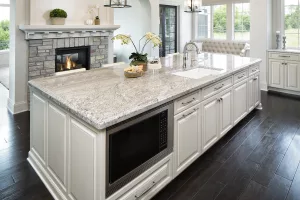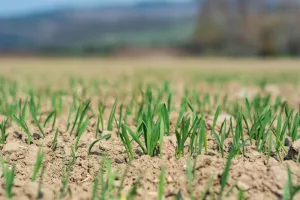Granite Care 101: Adhesives, Polishing, and Maintaining Your Investment
Go Back To Previous PageGranite countertops are prized in many homes, renowned for their natural beauty, durability, and timeless elegance. But like any investment, granite requires proper care and maintenance to retain its luster and longevity. Whether you’re a seasoned homeowner or just starting your granite marble journey, understanding the nuances of granite care is essential. This guide will delve into granite care, from daily cleaning and sealing to polishing and repair.
We’ll even touch on specialized topics like adhesives and granite polishing discs to equip you with the knowledge you need to keep your granite countertops looking their best for years.
Daily Care: Keeping Your Granite Looking Its Best
Cleaning: Simple Yet Effective
Daily cleaning products are the cornerstone of granite care. Fortunately, it’s a simple process. Wipe down your countertops with a soft cloth or sponge and a mild cleaning solution. Warm water and a few drops of dish soap are all you need.
Avoid harsh chemicals or abrasive cleaners, which can dull the surface or damage the sealant. Dry the countertops with a clean, soft cloth for a streak-free finish.
Preventing Stains and Damage
Granite is durable, but it’s not impervious to stains or damage. To protect your investment, use coasters under glasses to prevent water rings, trivets under hot pots and pans to avoid heat damage, and cutting boards to prevent scratches from knives. Wipe up spills promptly, especially acidic substances like citrus juice or wine, which can etch the surface if left to sit.
Sealing: Protecting Your Granite’s Porosity
Understanding Granite Surface’s Porosity
Granite is a natural stone with varying degrees of porosity. Porous materials have tiny holes or spaces that can absorb liquids, leading to stains or discoloration. Sealing your granite countertops creates a protective barrier that helps prevent liquids from penetrating the surface.
countertops creates a protective barrier that helps prevent liquids from penetrating the surface.
Sealing Frequency
The frequency of sealing depends on the type of granite and its porosity. A simple water test can help you determine if your countertops need proper sealing. Pour a small amount of water onto the surface.
If the water beads up, your sealant is still effective. If the water absorbs into the stone, it’s time to reseal. Typically, granite countertops need to be sealed every one to three years.
Sealing Process
Sealing your granite countertops is straightforward. First, clean the countertops thoroughly and allow them to dry completely. Then, apply the sealant evenly according to the manufacturer’s instructions. Let the sealant sit for the recommended time, then wipe off any excess with a clean cloth.
Polishing: Restoring Shine and Luster
When to Polish
Over time, granite countertops can lose their shine because of wear and tear, etching from acidic substances, or improper cleaning methods. Polishing can help restore the shine and luster of your granite, making it look new again.
Polishing Methods
Various methods for polishing granite exist, ranging from DIY techniques to professional services. You can use granite polishing discs with a power tool or by hand for DIY polishing. Start with a coarse grit disc to remove scratches or etching, then gradually move to finer grits to achieve a high-gloss finish.
Hiring a professional stone restoration specialist is best if you’re unsure about DIY polishing.
Repairing: Addressing Damage and Imperfections
Types of Damage
Granite is a durable material, but it’s not indestructible. Accidents happen, whether it’s a dropped heavy object, a forceful impact, or everyday wear and tear. These mishaps can lead to various types of damage, including chips, cracks, scratches, and even etching from acidic substances.
Fortunately, most damage to granite countertops can be repaired, restoring their beauty and structural integrity. The extent of the damage will determine the appropriate repair method, ranging from simple DIY fixes to professional restoration techniques.
Repairing Chips and Cracks
You can often tackle the repair using a granite adhesive for minor chips or cracks. These adhesives are formulated to bond with granite and come in various colors to match your countertop. Before applying the adhesive, clean the damaged area thoroughly to remove any dust or debris.
Then, carefully apply the adhesive according to the manufacturer’s instructions, filling the chip or crack completely. Use a putty knife or razor blade to smooth out the adhesive and remove any excess. Once the adhesive dries, you can polish the area with fine-grit sandpaper or granite polishing discs to blend it in with the surrounding surface.
Professional Repair
For more extensive damage, such as large cracks, deep scratches, or widespread etching, it’s best to contact a professional stone restoration specialist. They have the expertise, tools, and experience to handle complex repairs and restore your granite countertops to their former glory.
Professional restoration may involve diamond grinding, honing, and polishing to remove damage and achieve a smooth, even finish. They can also address issues like seam separation or unevenness in the countertop surface.
Specialized Care: Addressing Specific Situations
Undermount Sinks
Undermount sinks are popular for granite countertops, offering a seamless look and easy cleaning. However, proper installation is crucial to prevent leaks or damage. Undermount sink clips for granite are essential for securing the sink to the countertop and ensuring a long-lasting installation.
Dealing with Stubborn Stains
You can try using a poultice for stubborn stains that don’t respond to regular cleaning. A poultice is a paste made from baking soda or other absorbent materials that is applied to the stain and left to sit for several hours or overnight. The poultice draws out the stain, making it easier to remove.
Conclusion
Granite countertops are a beautiful and durable addition to any home, adding value, elegance, and functionality to your kitchen or bathroom. Following these care and maintenance tips, you can protect your investment and keep your granite looking its best for years.
Remember to clean your countertops regularly with a mild cleaning solution, seal them as needed to prevent staining, and address any damage promptly to avoid further deterioration. With some care and attention, your granite countertops will continue to be a source of pride and enjoyment in your home, enhancing its beauty and functionality for generations to come.


